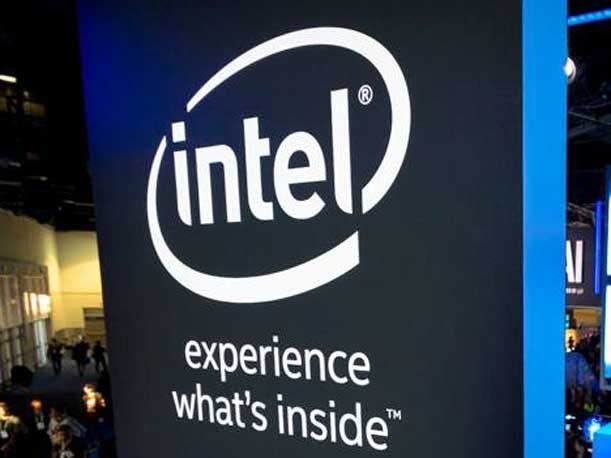Intel To Get Nearly $8B In Subsidies In US CHIPS Act Deal
by nlqip

The nearly $8 billion in federal funding is a much-needed victory for Intel CEO Pat Gelsinger, who has been leading the company through a $10 billion cost-cutting effort in reaction to worsening financial conditions as he pushes to complete his ambitious comeback plan.
Intel said it has finalized a deal with the White House to receive nearly $8 billion in federal funding to subsidize new chip manufacturing sites in the U.S.
The Santa Clara, Calif.-based company said in an early Tuesday announcement that the U.S. Department of Commerce has awarded it up to $7.86 billion in direct funding through the U.S. CHIPS and Science Act, which was signed into law by President Biden in 2022 as a key piece of his administration’s agenda.
[Related: Intel: Partners Will Play ‘Massive Role’ In 2025 Gaudi 3 AI Chip Rollout]
The semiconductor giant said the funding will go toward the build-out of previously announced chip manufacturing and advanced packaging plants in Arizona, New Mexico, Ohio and Oregon, which are also backed by more than $100 billion of investments by the company.
Intel said it also plans to take advantage of the U.S. Treasury Department’s Investment Tax Credit, which covers up to 25 percent of qualified investments of more than $100 billion.
The subsidies complement a previously awarded $3 billion federal contract to help the U.S. military improve its capabilities and secure a domestic supply chain as part of the U.S. CHIPS and Science Act’s Secure Enclave Program.
The chipmaker said the U.S. CHIPS and Science Act funding “is less than the proposed preliminary award” of up to $8.5 billion that was announced in March because of a “congressional requirement to use CHIPS funding to pay for the $3 billion Secure Enclave program.”
Intel’s stock price was down more than 2.5 percent late morning Tuesday.
The nearly $8 billion in federal funding is a much-needed victory for Intel CEO Pat Gelsinger, who has been leading the company through a $10 billion cost-cutting effort in reaction to worsening financial conditions as he pushes to complete his ambitious comeback plan. (Investors responded well in late October to Intel’s third-quarter earnings update, where it exceeded expectations thanks to improvements being made at a “measured pace.”)
“With Intel 3 already in high-volume production and Intel 18A set to follow next year, leading-edge semiconductors are once again being made on American soil,” Gelsinger said in a statement.
Gelsinger is referring to the third and fifth advanced chip manufacturing nodes that are key to his so-called IDM 2.0 strategy, which calls for a major expansion of the company’s chip manufacturing capacity and capabilities in the West. The strategy is an evolution of Intel’s traditional integrated device manufacturing model where it fabricates the chips it designs.
Gelsinger has seen subsidies from the U.S. CHIPS and Science Act as a key source of funding for his strategy as well as broader U.S. efforts to offset the massive concentration of advanced chipmaking in Asia that has been heavily subsidized by Taiwan and South Korea.
“Strong bipartisan support for restoring American technology and manufacturing leadership is driving historic investments that are critical to the country’s long-term economic growth and national security. Intel is deeply committed to advancing these shared priorities as we further expand our U.S. operations over the next several years,” Gelsinger added.
An executive at an Intel systems integration partner told CRN that while the nearly $8 billion in U.S. subsidies should help Gelsinger execute on his agenda, the CEO’s biggest challenge is getting Intel out of the hole that was created by previous leaders, who he believed put too much of an emphasis on accounting over engineering while it faltered in manufacturing.
“I think Gelsinger is the right guy, but he’s just got a hell of a job ahead of him,” said Dominic Daninger, vice president of engineering at Burnsville, Minn.-based Nor-Tech.
Source link
lol
The nearly $8 billion in federal funding is a much-needed victory for Intel CEO Pat Gelsinger, who has been leading the company through a $10 billion cost-cutting effort in reaction to worsening financial conditions as he pushes to complete his ambitious comeback plan. Intel said it has finalized a deal with the White House to…
Recent Posts
- Jen Caltrider Unwraps this Season’s Hidden Privacy Nightmare
- NordVPN Black Friday Deal: Save up to 74% on yearly subscriptions
- Get 50% off Malwarebytes during Black Friday 2024
- Over 1,000 arrested in massive ‘Serengeti’ anti-cybercrime operation
- Sherweb Adds New Vendors Aimed At Enabling ‘MSPs To Address Every Aspect Of Cybersecurity’
